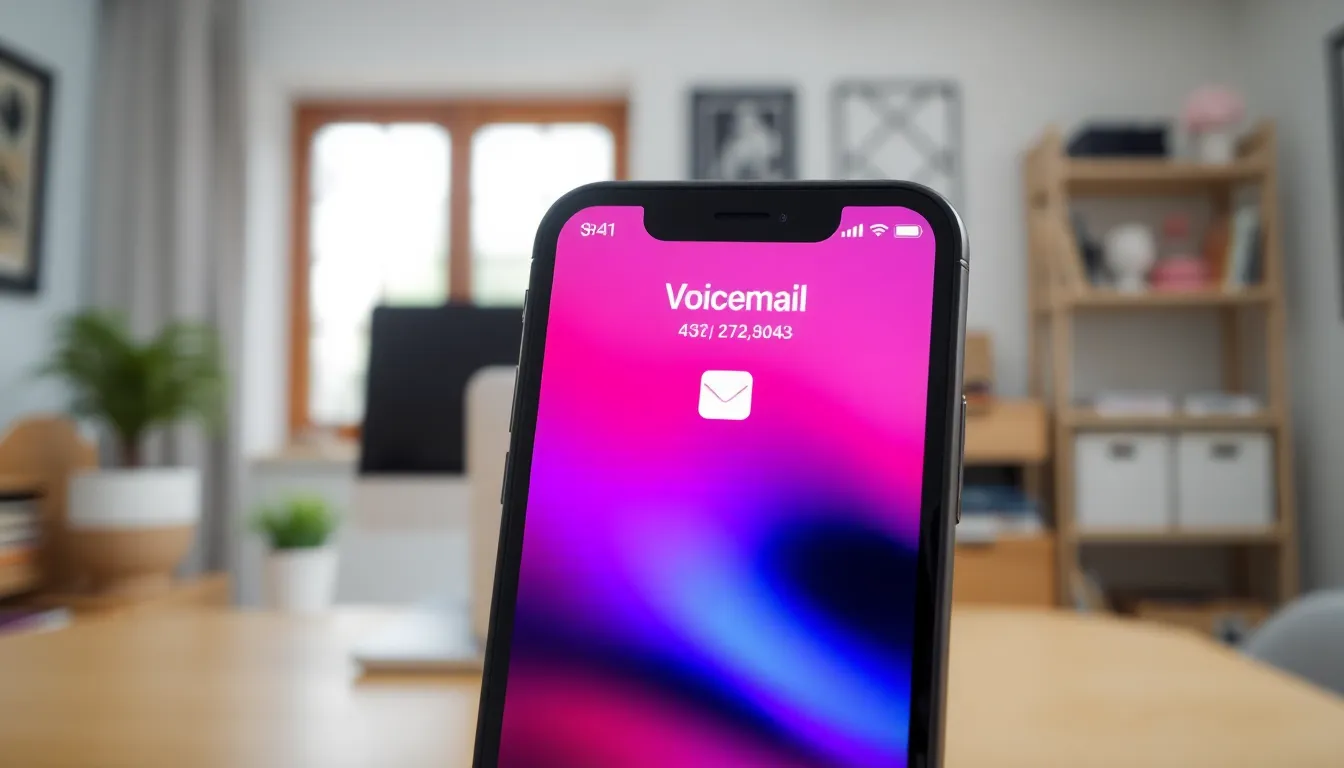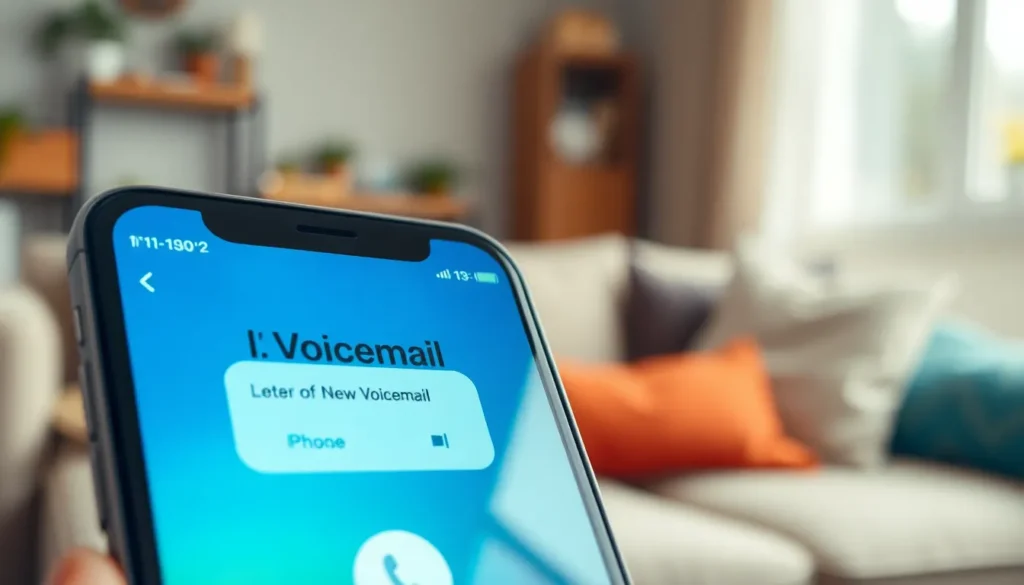Table of Contents
ToggleVoicemail is like the modern-day message in a bottle—except it’s trapped in your phone, waiting for someone to listen. With iPhones, knowing how long a voicemail can be is crucial for those moments when you want to spill your secrets or just remind someone about that pizza party. But how long can you ramble on before the voicemail gods cut you off?
Overview of Voicemail on iPhone
Voicemail on the iPhone offers a convenient way to receive and store voice messages when calls go unanswered. Users can listen to voicemails and access them easily through the Phone app. Standard voicemail messages typically allow a duration of up to 2 minutes, although this time can vary based on the carrier.
Some carriers impose strict limitations on voicemail length. For instance, AT&T and Verizon generally maintain the 2-minute cap. Visual voicemail features allow for quick navigation between messages, enhancing the user experience.
In addition to length, voicemail storage often comes with limits. Carriers might impose a cap on the number of saved voicemails. For example, many providers allow for storage of around 20 to 30 messages, depending on account settings and specific plans. Deleting old messages ensures room for new ones.
Listening speed influences perceived voicemail duration. Users may speed up the playback to review messages quickly, especially when examining details like reminders for events. Regular management of voicemails ensures smoother functionality of the iPhone’s voicemail system.
Notifications about new voicemails appear on the lock screen or as badge alerts. These notifications ensure users never miss important messages. With this efficient setup, managing voicemail remains straightforward and useful for personal or business communications.
Voicemail Length Limit

Understanding voicemail length limits is crucial for effective communication. Users often want to express thoughts succinctly without being cut off.
Standard Voicemail Duration
Most carriers set a standard voicemail duration of 2 minutes. Carriers like AT&T and Verizon adhere to this cap consistently. Voicemail messages generally become less effective if they exceed this timeframe. Shorter messages are often easier for recipients to listen to and understand. In practice, keeping messages within the limit allows for more productive communication.
Variability in Length
Some carriers might offer slightly different voicemail length options. Certain regional providers allow longer messages, sometimes reaching up to 3 minutes. Variability occurs based on provider policies and technology infrastructure. Users should check with their specific carriers for detailed information. Familiarizing oneself with these limits aids in crafting messages that meet requirements efficiently.
Factors Affecting Voicemail Length
Voicemail length can vary based on several key factors. Understanding these factors helps users send effective messages without exceeding limits.
Carrier Limitations
Carrier policies dictate voicemail length. Major carriers like AT&T and Verizon typically enforce a 2-minute limit on voicemail messages. Some regional providers may extend this limit to 3 minutes. Users should check with their particular carrier for specific guidelines as deviations can occur. For example, T-Mobile may offer different durations based on the plan. Knowing the carrier’s restrictions assists users in managing their voicemail expectations effectively.
Device Settings
Device settings influence voicemail playback and recording. iPhone users access settings through the Phone app to check voicemail preferences. While the device itself does not typically limit voicemail length, the interface can offer features that enhance user experience. Users may enable options for visual voicemail, making it easier to manage longer messages. Adjusting notifications can also help avoid missing important voicemails despite potential length constraints. Familiarizing oneself with these settings ensures effective communication and a better handling of voice messages.
Tips for Leaving Voicemails
Crafting an effective voicemail can enhance communication. Following certain strategies improves clarity and ensures messages are well-received.
Best Practices for Effective Messages
Start with a clear introduction, stating your name and the purpose of the call. Use concise language to get straight to the point. Aim for a friendly tone to make a positive impression. Provide essential information, such as dates and times, to facilitate callbacks. Close with a polite invitation for the recipient to return the call, including your contact number for easy reference.
Managing Voicemail Space
Organizing voicemail storage is crucial for maintaining an efficient system. Regularly delete old or unimportant messages to free up space. Prioritize saving only essential voicemails, as most carriers limit users to 20 to 30 saved messages. Check for providers that may allow longer voicemail durations, which can impact available storage. Utilizing visual voicemail features can streamline playback and management, allowing quick access to important messages.
Understanding voicemail limits on iPhones is crucial for effective communication. With most carriers enforcing a 2-minute cap on messages users need to be concise to convey their thoughts clearly. This ensures that important information is delivered without being cut off.
Additionally managing voicemail space is essential. Regularly deleting old messages and prioritizing important ones can enhance overall voicemail efficiency. Utilizing features like visual voicemail can also streamline the process making it easier to access and manage messages. By following these tips users can maximize their voicemail experience and stay organized in their communications.







